A bad ad for a device that photographed CRTs
It's funny! It's confusing! It's a camera in a box.
This newsletter does not contain ads, sponsored posts, or affiliate links. Open and click tracking are disabled. And there is no paid upgrade. Enjoy.
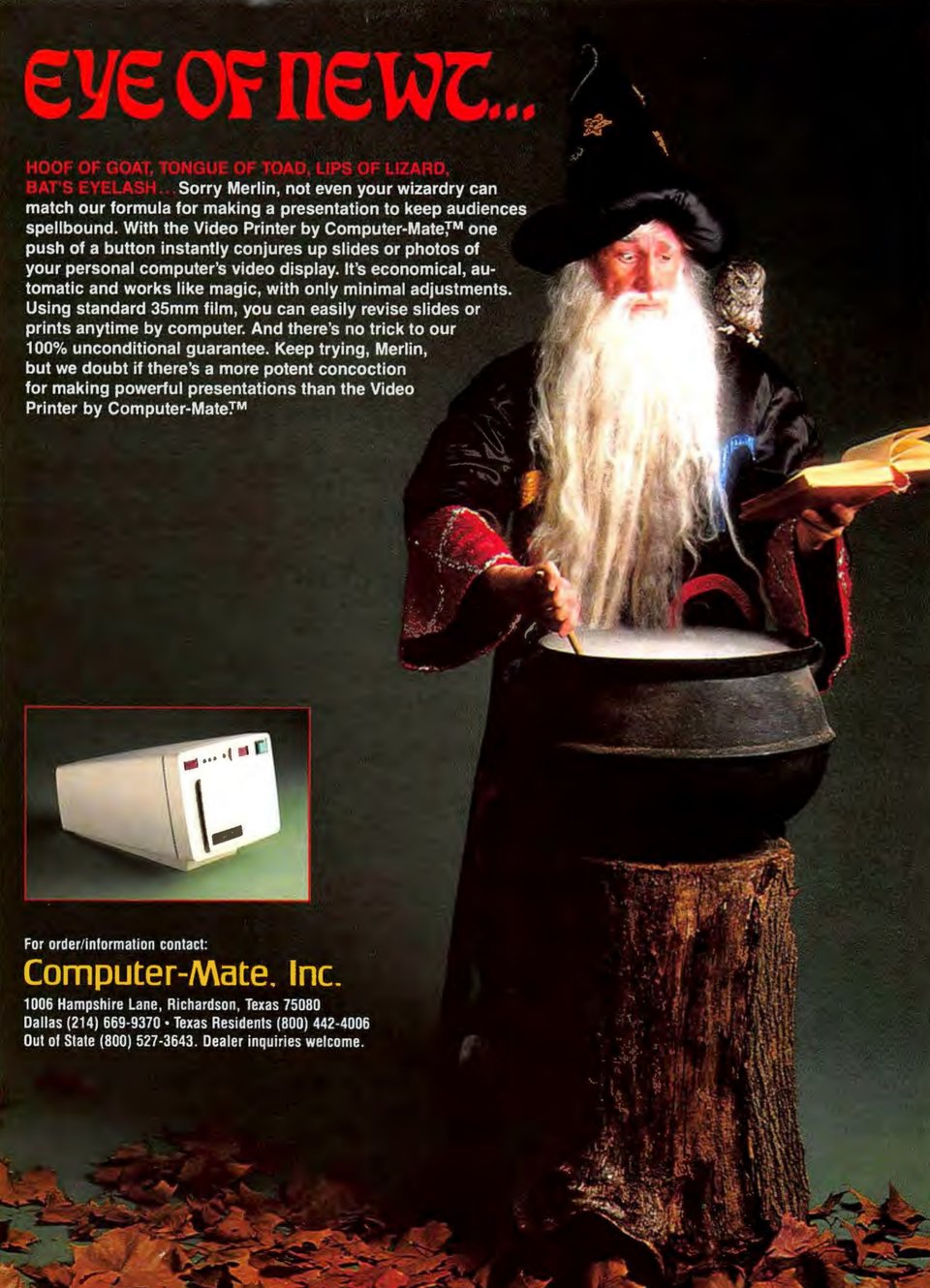
Merlin seems more aware of how this ad reads than the copywriters who drafted it.
The first 14 words are utterly devoid of meaning. The 11 that follow do nothing but argue that Computer-Mate Inc. was really good at making presentations.
But boy oh boy does it stand out from the black-and-white, text-heavy pages that bookend it!
Five lines in, we finally learn that our confused wizard is trying to…mix a potion? For a video printer.
It was hard to find any documentation for how to operate this specific device, which took screenshots back when they were called screen dumps. But the Video Printer (A+ product name by the way) by Computer-Mate sounds nearly identical to similar hardware circulating in the early 80s.
In fact, there was another (much more legible!) video printer ad 30 pages before Merlin’s:
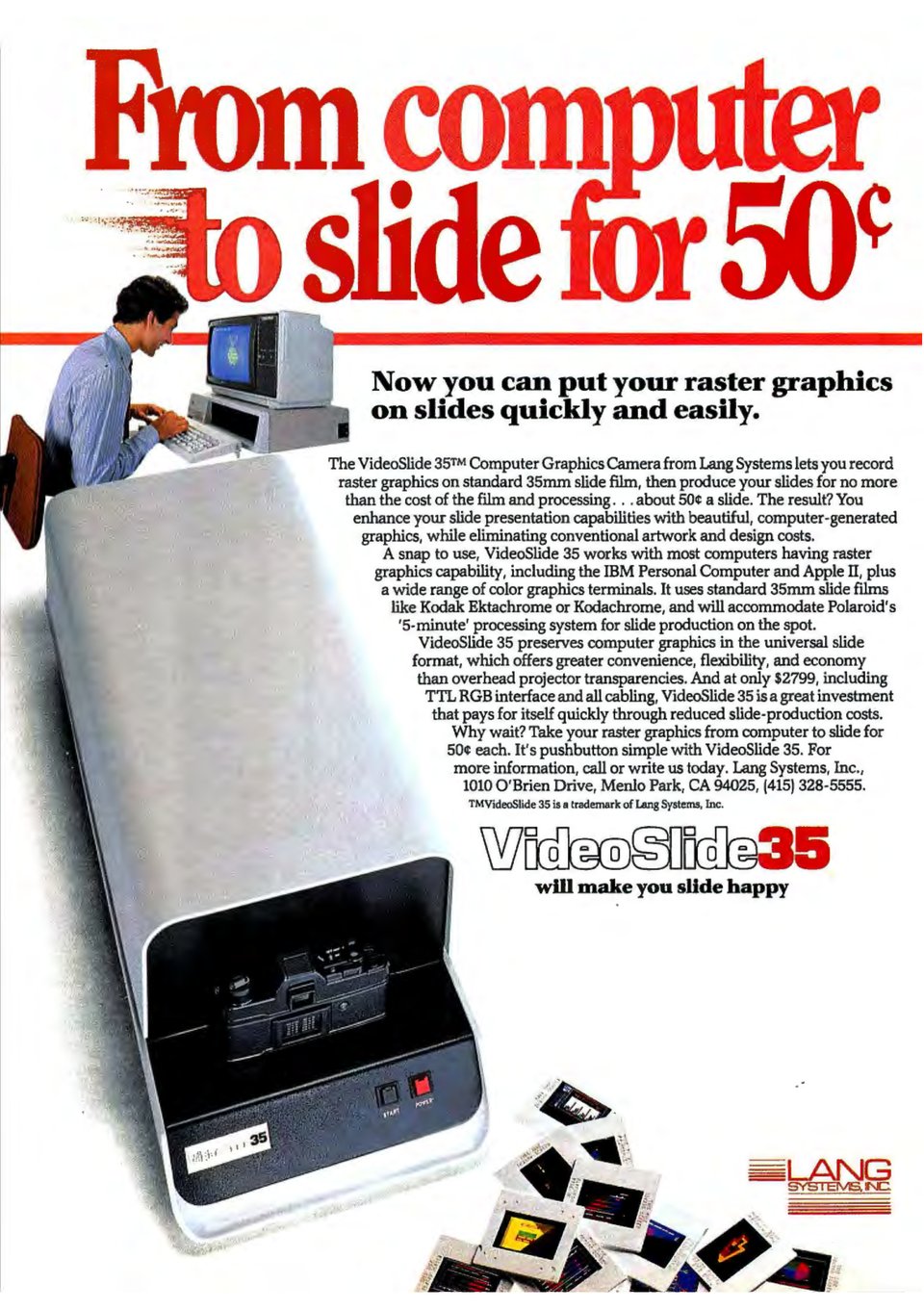
See what happens when you hire a copywriter who knows what they’re doing!?
And, yes, from what I can tell, there was an entire subcategory of video printers that had video outputs to small CRT screens enclosed within miniaturized darkrooms and camera mounts at one end.
“Screen glare was the number one enemy of the screenshot,” Jaz Rignall explained in one article. “Even the slimmest shaft of light could reflect off a CRT or TV set, ruining a picture, so screenshots had to be taken in the dark.”
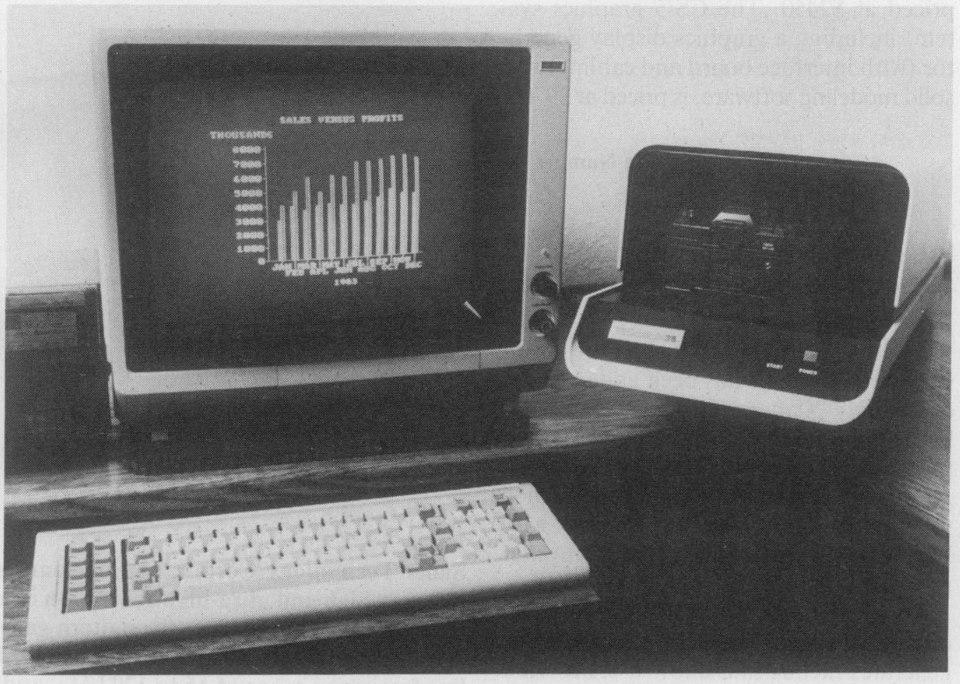
It was so hard to DIY screenshots that purpose-built enclosures like Computer-Mate’s retailed for $2,495 (Lang Systems’ version ran for $3,099), or around half the price of a car at the time.
What did you get for that much? Not film, ya freeloader! Ads I found in other magazines clarified that film was not included and that the Video Printer only worked with IBM machines.
The market for this hardware was high-end business presentations, though, with knobs and dials for automatic film advance, adjusting chroma, brightness, contrast, and raster “without loss of resolution.” That’s a pretty low bar, considering the CRTs of the time. It’s also why many “screenshots” from the time were actually handdrawn promotional art.
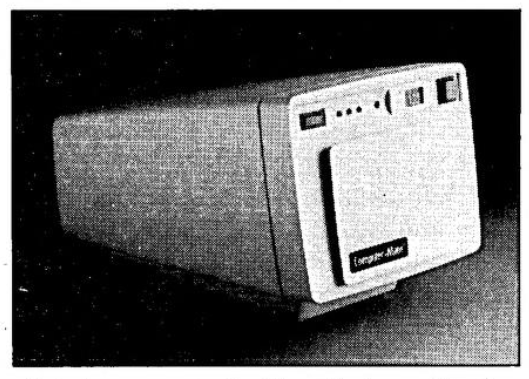
Computer-Mate’s Video Printer measured 7.5 inches tall, 9.5 inches wide, and 17.5 inches long. With one ad in a 1982 issue of PC Mag mentioning a viewport–presumably of the small CRT inside the box, connected via TTL RGB interface–and a “35mm film system.”
It was an average camera in a bespoke plastic box.
But, sure, waste the first five lines of your ad arguing that it’s magic.
At least the VideoSlide 35 worked with IBM, Apple, and unspecified other “color graphics terminals.” And it worked over an NTSC interface (single cable versus the RGB multi-cable).
Computer-Mate did toss in a 100% unexplained “100% unconditional guarantee” into the pot, though!
Pointing a camera at your screen remained the best option for many years. A 1988 issue of Nintendo Power asked readers to take photos of their high scores and send them in:
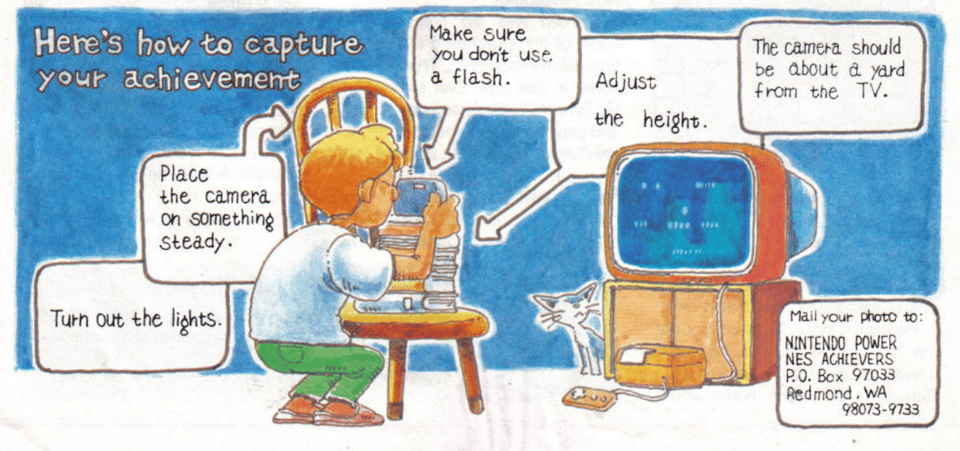
What Nintendo neglected to mention was the importance of shutter speed, which needed to be a snail’s pace to avoid capturing whatever part of your screen had yet to be painted. In response to a critical review of the VideoSlide 35, Lang Systems went as far as recommending an exposure time of 12-18 seconds.
Obviously, any movement on the screen during that exposure would result in blurred or smeared pixels, which is why Tron used “high-resolution electronic imaging camera in conjunction with a precision graphics recorder” to capture the movie’s CG images frame by frame (although there seems to be some disagreement about the specifics so take that with a grain of salt!).
Computer-Mate, for its part, seemed to be a pretty strange computer hardware company. Focusing more on protective covers:
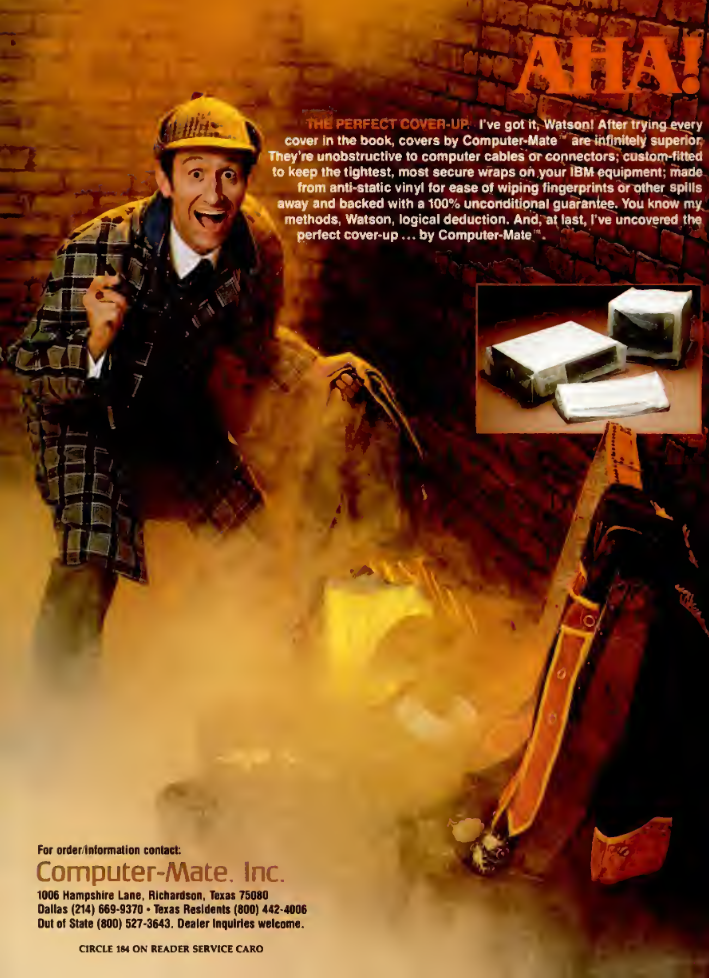
And cases:
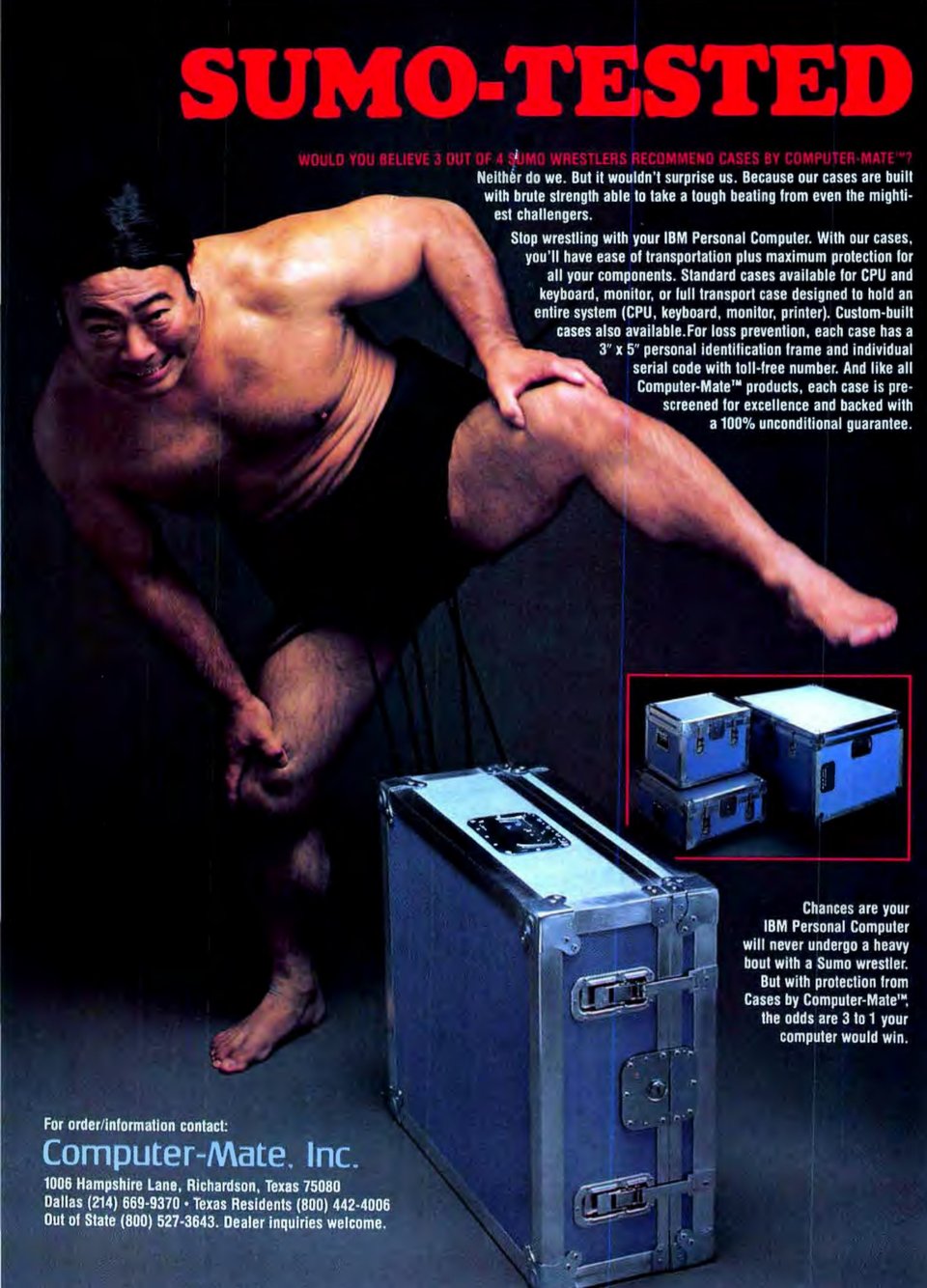
The company shut down in 1985, two years after it was registered, and executives moved on to everything from arthritic pharmaceuticals to transmission repairs.
But for a few pages in the spring of 1983, “not even Merlin’s wizardry could match their formula.”
Links to Resources: